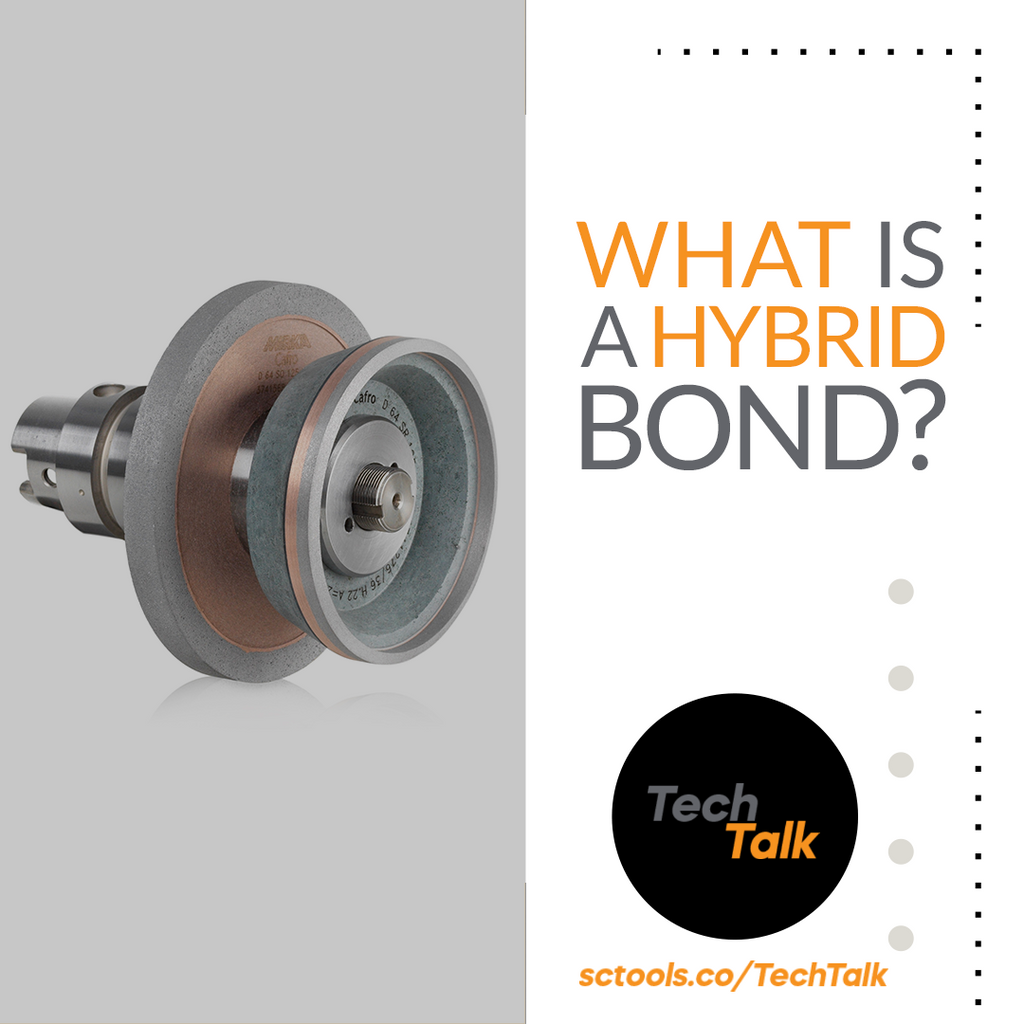What is a hybrid bond?
The hybrid is a blend of two very different bonding materials, a polymer and a sintering alloy, which allows the Diamond or CBN wheels to achieve the top in material removal ability, about three to four times higher than the one of resin bonds.
To achieve such an excellent result, you have to follow some grinding conditions suitable to the hybrid bond wheels, consisting in a few basic rules and the availability of a CNC grinder to have an adequate power and rigidity, a coolant aid lines, a good filtration, and a heat sink for getting controlled temperatures.
Hybrids are giving the best performances at low cutting speed, when increasing the workpiece OD or the depth of cut, you must reduce the cutting speed and vice-versa.
Cutting speed:
- The highest corner retention is achieved at the maximum speed value compatible with the wheel free cutting ability.
- For fluting the suggested wheel speed would be: 15 to 18 m/s equivalent to 2,953 to 3,543 ft/min
- For gashing or primary and secondary reliefs the suggested speed would be: from 18 to 22 m/s equivalent to 3,543 to 4,330 ft/min
Depth of cut:
- Hybrids are showing the best performances with high depth of cut values and low feeds, provided that the machine power and rigidity does allow it, the below results may vary according to the adequate grinding environment previously mentioned, but it will be safe to share the following conservative average results.
- For fluting wheels: from 1 to 10 mm equivalent to .0393" to .3937" per pass.
- For gashing or primary and secondary reliefs: from 0.5 to 5 mm equivalent to 0.019" to 0.275" per single pass.
Feed rate:
- The optimum feed is achieved by ensuring that the amperometer reaches a constant value, piece after piece. The wheel has to cut without effort, noise and free of vibrations, what an amperometer should be able to detect with sufficient precision.
- The workpiece temperature during the feed does not have to exceed values such as you cannot touch it, a limited temperature rise must be considered as normal and acceptable.
- For fluting peripheral wheels: from 40 to 120 mm/min equivalent to 0.131 to 0.393 ft/min per pass
- For gashing or primary and secondary reliefs: from 80 to 180 mm/min equivalent to 0.262 to 0.590 ft/min per single pass.
Coolant:
- The coolant pressure and cleaning are basic premises to achieve the maximum depth of cut value; higher pressures lead to better wheel performances. Pressures lower than 8 bar, equivalent to 115 psi, are not recommended for the hybrid bonds either Diamond or CBN.
- A clean oil is a must when it comes to use hybrid bonds: a performant filtering system (“super filtering”) is highly recommended, as for instance the ones with diatom flours or filtering pressure cartridges.
- For serial production the use of a heat sink into the oil tank is highly recommended, as the temperature rise modifies the oil viscosity and reduces the cooling performance. Oil temperatures in relationship with room temperature, within the range of 22 to 28 °C or equivalent to 72 to 83 °F, are recommended. It is important not to exceed the maximum value of 38 °C or equivalent to 100 °F.
Would you like to learn more about grinding, or machining resources? Please visit our TechTips page https://sctools.co/TechTips.
 |
If you have any questions about carbide cutting tools, end mills, drills, etc. be sure to reach out to us @ sctools.co/Home or call us at (877)737-0987. We help you machine better! |



Comments (0)